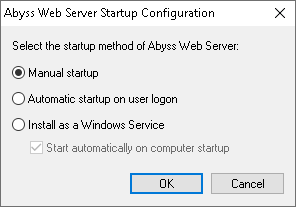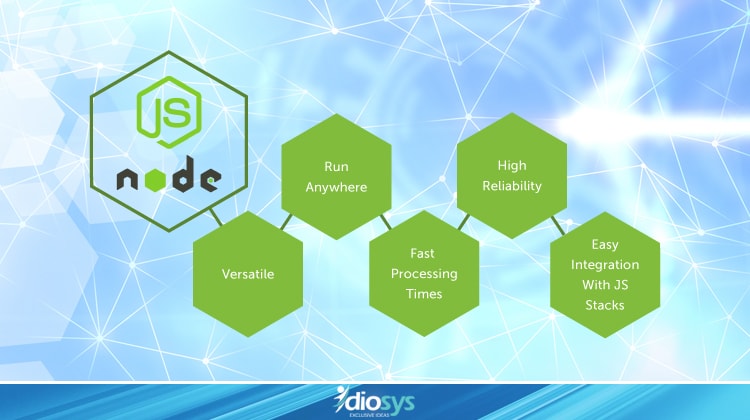
Basic of Abyss web serverĪbyss web server is a compact web server available for Windows, macOS, and Linux operating systems. Now let’s take a look at the Abyss web server which is used in the world of the web. You’re putty in the hands of whoever developed that software.” “If you use a proprietary program or somebody else’s web server, you’re defenceless. These are called web forms and the information you have entered is stored on the webserver. For example, You might have filled in information like Name, Email Id, and Address, etc. The web server can return static web pages as well as dynamic web page content to the client.Ī webserver not only retrieves and sends information but can also save information received from the client systems. After receiving the HTTP command the web servers send the information back to the client computer which we are seeing on the screen. The file can be an image, text, script, or anything that is stored in the web server’s storage. What happens when we type or https: to visit a website? The client computer sends a request to the webserver to retrieve the file mentioned in the HTTP command. It uses a format for getting queries from the user and it is nothing but the HTTP protocol. A web server is nothing but just a big computer that helps the users to retrieve the information they want from the World Wide Web for all the users of Windows, macOS, or Linux. The relation between the web and a web server is like that of a baby and its mother.

The most common options are as follows:Īppoint the newly installed PHP interpreter for use in PhpStorm as described in Configure local PHP interpreters.You cannot browse and get information from the World Wide Web without Web servers.
#Abyss web server javascript support install#
Install an alternative PHP interpreter with the php-cgi module included. To be able to use the PHP built-in web server, do the following: This indicates that PhpStorm is configured to use the PHP interpreter bundled with macOS, which does not contain the php-cgi module. On macOS, you may get the php-cgi not found error when trying to use the built-in server. To suppress displaying the authorization popup, select the Allow unsigned requests checkbox.
#Abyss web server javascript support manual#
However this behavior may be annoying, for example, it may block your debugging session if manual intervention is impossible. To access the requested page, click Copy authorization URL to clipboard in the authorization popup and paste the generated token in the address bar of the browser. If this checkbox is cleared (by default), then the debugger listens only to local connections.įor security reasons, any request to a page on the built-in server from outside PhpStorm is by default rejected and the authorization popup is displayed. If this checkbox is selected, then the files on the built-in server running on the specified port are accessible from another computer. You can set the port number to any other value starting with 1024 and higher. By default, this port is set to 63342 through which PhpStorm accepts connections from services.

Use this spin box to specify the port on which the built-in web server runs. You can also preview HTML and PHP files via the built-in preview in the dedicated editor tab. Click the browser button to open the web server file URL, or Shift+LeftClick it to open the local file URL.īesides PHP scripts, the Open in Browser action is available for all other file types that are rendered by a web browser (HTML, XML, JSP, and so on). Use the browser popup in the top right part of the editor window (appears on hover).

Right-click the file in the Project tool window and select Open in Browser. Open the file in the editor and press Alt F2. To render the PHP program output with a web browser or PhpStorm's built-in preview window, do one of the following: To do this, open the desired browser and type the URL of the file with respect to the project structure, using as the root URL.įor more information about working with deployment servers, refer to the Deployment section. If necessary, you can still open the page via the PhpStorm built-in web server. If a Deployment server is defined for this project and marked as default, the file will be served from this server instead. To run your PHP application, either open a file in the browser or create a dedicated run/debug configuration and launch it. When the interpreter is configured, PhpStorm will automatically start the PHP Built-In Web Server and redirect all PHP requests to it as soon as you run your PHP application. To use it with PHP files, you need a local PHP interpreter specified for your project.

The built-in server can only serve static content like HTML, JavaScript and CSS. All the project files are served on the built-in server with the root URL with respect to the project structure. This server is always running and does not require any manual configuration. PhpStorm has a built-in web server that can be used to preview and debug your application.


 0 kommentar(er)
0 kommentar(er)
